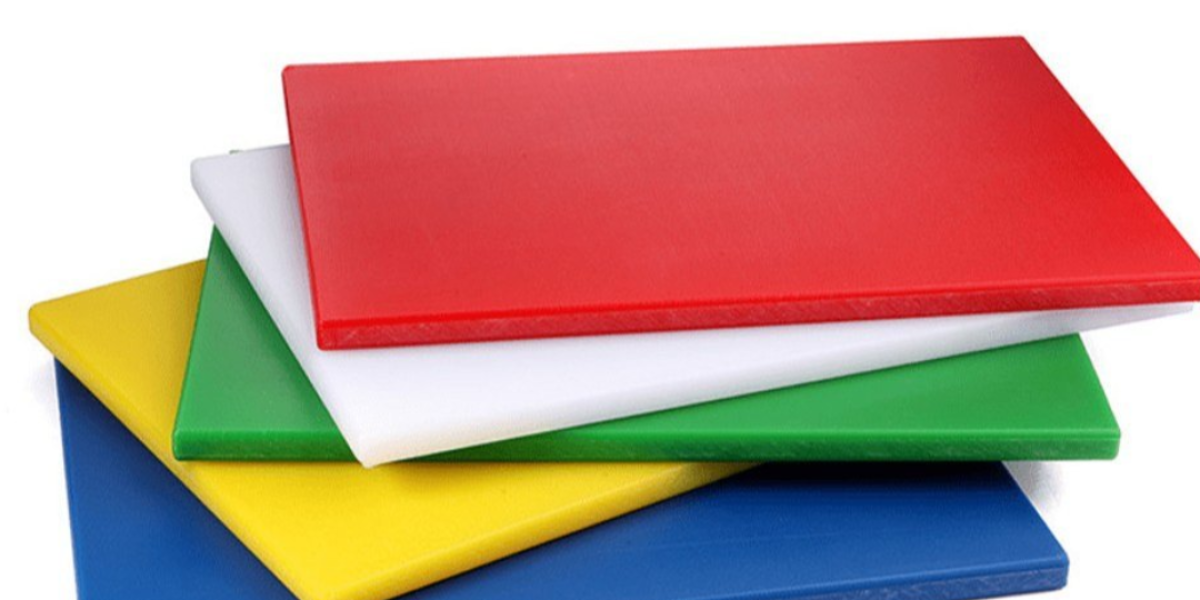High-Density Polyethylene (HDPE) sheets have emerged as a pivotal material in a variety of industries due to their unique combination of strength, durability, and adaptability. These sheets, commonly referred to as HDPE Sheets plastic, are made from a thermoplastic polymer that offers a lightweight yet robust alternative to other materials. As businesses and manufacturers increasingly seek efficient and sustainable materials for projects, Mahira Polyglobal LLP provide innovative solutions that meet a wide range of needs. From construction to agriculture, the applications of plastic HDPE sheets are extensive and growing.
What Are HDPE Sheets?
HDPE sheets are produced from high-density polyethylene, a thermoplastic characterized by a linear structure that grants it excellent tensile strength and impact resistance. During the manufacturing process, the raw ethylene gas is polymerized to create the dense material that becomes HDPE. This structuring results in unique properties—HDPE sheets are not only incredibly tough but also resistant to moisture and chemicals. These sheets come in various colors and thicknesses, accommodating diverse industry standards and applications.
The versatility of hdpe plastic sheets stems from their ability to be customized. Whether a project requires specific colors, cut sizes, or thicknesses, HDPE sheets can be manufactured to meet those specific criteria. Whether used in signage, protective barriers, or container applications, the ability to tailor these sheets makes them invaluable in multiple sectors, including food processing, construction, and healthcare.
Diverse Applications of HDPE Sheets Plastic
The potential uses for Plastic HDPE Sheetss are extensive and varied. In the construction industry, HDPE sheets are widely employed as vapor barriers, moisture barriers, and protective linings. Their excellent resistance to water and humidity makes them ideal for protecting structures against the elements. Additionally, they are often used in projects requiring insulation due to their low thermal conductivity, which helps maintain temperature regulation in buildings.
In the agricultural sector, the applications of hdpe plastic sheets are equally important. Farmers utilize these sheets in various ways, such as greenhouse coverings that enhance plant growth by creating controlled environments. The water and UV resistance of HDPE sheets allows them to function effectively as mulch films, suppressing weed growth while retaining soil moisture, which is crucial for crop health. Moreover, they are often employed as pond liners to prevent water loss and ensure sustainable farming practices.
Benefits of Using Plastic HDPE Sheets
Several key advantages contribute to the popularity of plastic HDPE sheets across multiple industries. First and foremost is their durability. HDPE sheets can withstand extreme weather conditions, UV exposure, and mechanical stresses, making them suitable for both indoor and outdoor applications. This natural toughness reduces the necessity for frequent replacements, resulting in cost savings over time.
Moreover, the chemical resistance of hdpe plastic sheets is remarkable. They can endure exposure to a wide range of acids, alkalis, and solvents without degrading, making them ideal for use in laboratories and industrial settings where hazardous materials are common. This non-reactive quality also extends into the food industry, where the sheets can be used safely in processing applications without leaching harmful substances.
Environmental Impact and Sustainability
As the emphasis on sustainability grows, HDPE sheets plastic represent an eco-friendly option. One of the most compelling features of these sheets is that they are 100% recyclable. Once they reach the end of their useful life, HDPE sheets can be processed and remolded into new products, significantly reducing waste in landfills and decreasing the demand for virgin plastic production. In a world increasingly driven by the need for sustainable practices, the recyclability of HDPE is a significant advantage.
Furthermore, when compared to other materials, the production of hdpe plastic sheets has a relatively lower carbon footprint. Advanced manufacturing processes are continuously being developed to enhance energy efficiency and reduce environmental impacts during production. In addition, some manufacturers are exploring bio-based HDPE alternatives made from renewable resources, which further supports sustainable manufacturing practices.
Challenges in the Use of HDPE Sheets
Despite the many advantages, the use of Polyethylene high density sheet does come with its challenges that potential users should be aware of. Thermal expansion is a critical factor to consider; like many plastics, HDPE can expand or contract with temperature changes. This expansion can lead to issues in applications requiring tight tolerances, especially during extreme temperature fluctuations. Proper installation techniques and allowances for expansion should always be taken into account to avoid structural problems.
Another challenge lies in the joining and assembly of HDPE sheets. While various methods exist for welding and connecting these sheets, they require specialized techniques and equipment. Mechanical fasteners, adhesives, and thermal welding are all options, yet they necessitate skilled labor to ensure that the connections are strong and secure. Companies must invest in training and appropriate tools to manage these processes effectively, which can add to project time and costs.
Innovations and Future Directions in HDPE Technology
The future of HDPE sheets is bright with ongoing innovations continuously improving their properties and applications. Manufacturers are increasingly developing enhanced formulations that incorporate additives for specific performance enhancements, such as increased impact resistance, flame retardancy, and UV stability. These advancements mean that HDPE sheets can be adapted to meet the needs of even the most demanding applications, from construction and design to specialized industrial uses.
Moreover, the rise of smart materials technology has led to research into embedding sensors within HDPE sheets. These sensors can monitor environmental conditions or structural integrity in real-time, allowing for proactive maintenance and improved safety in various applications, such as in infrastructure or environmental monitoring systems. The integration of smart technologies within plastic HDPE sheets exemplifies the potential for innovation across a broad range of industries.
Conclusion: The Promising Future of HDPE Sheets
In summary, Polyethylene sheet price represent a versatile, durable, and sustainable material choice suited for a multitude of applications. Their exceptional properties—including strength, chemical resistance, and recyclability—position them as a leading option across construction, agriculture, food processing, and beyond. As industries increasingly adopt sustainable practices, the role of hdpe plastic sheets is expected to grow, spurred by innovations and advancements in the manufacturing process.
As businesses navigate the challenges of using HDPE sheets, understanding the material’s benefits and limitations will be key to maximizing its potential. The future of these sheets is not merely confined to their existing applications; it also lies in the innovative techniques being explored to enhance their performance and sustainability. Thus, HDPE sheets are not just a material; they are an evolving solution to modern manufacturing and sustainable practices.
Frequently Asked Questions
Q1: How can HDPE sheets be cleaned effectively?
Cleaning HDPE sheets is straightforward; typically, they can be wiped down with a cloth and a mild soapy solution. For stubborn stains, a mixture of vinegar and water can be used.
Q2: Are HDPE sheets safe for food contact?
Yes, hdpe plastic sheets are non-toxic and safe for direct contact with food, making them suitable for applications in the food processing industry.
Q3: What are the common thicknesses available for HDPE sheets?
HDPE sheets are available in a range of thicknesses, generally ranging from 1/8 inch to 1 inch, but they can be custom-manufactured to meet specific project needs.
Q4: Can HDPE sheets be used for recycling?
Absolutely! HDPE sheets are 100% recyclable, and after their useful life, they can be collected and processed into new products, thus supporting environmentally-friendly practices.












